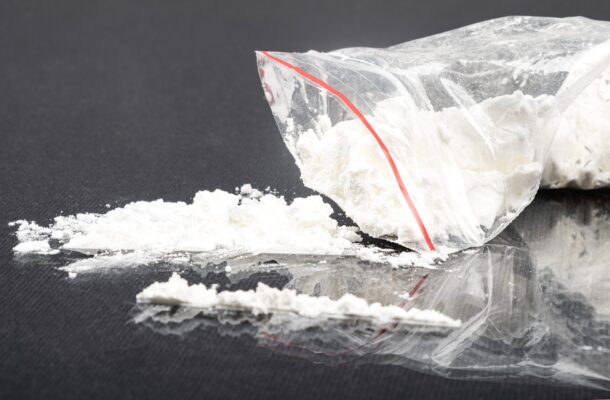Down the plughole

Everyone knows illicit drug use in Australia is worsening, but wouldn’t it be helpful if we had precise numbers for gauging the scale of the problem? How useful it would be if we could measure consumption, perhaps even knowing just how much of each substance was being used in what locations and how patterns were changing.
In fact, we do have those figures, through analysis of wastewater; we’re just not paying enough attention to them. They show our current means of minimising harm from drug use isn’t working. We must look beyond treating it as a mainly law enforcement problem.
The Australian Criminal Intelligence Commission released its 21st National Wastewater Drug Monitoring Program report last month. It found that ‘more than 16.5 tonnes of methylamphetamine, cocaine, heroin and MDMA combined was consumed between August 2022 and August 2023 representing a 17 per cent increase in consumption of these drugs from the previous year’.
Reports from the commission’s National Wastewater Drug Monitoring Program ought to be the most consequential inputs for developing illicit drug policy and law enforcement strategy in Australia. Seven years ago, on the eve of the release of the first report, one of Australia’s most senior law enforcement leaders at the time confided to this writer that the program would show, as it has shown, that our law enforcement strategy was having no impact on the availability of illicit drugs. It would show a failure of policy and strategy, that officer said.
Yet, the reports generally result in several print media reports and quickly fade from public and policymaking attention.
The program is a sophisticated initiative focused on gathering intelligence about drug consumption patterns across Australia. It involves collecting and analysing sewage samples from various places, including cities and regional areas, to detect and monitor the presence of illicit drugs and pharmaceuticals in wastewater. By examining the levels of substances such as methamphetamine, cocaine, MDMA, and opioids, it offers valuable insights into drug use trends, geographical distribution and changes in consumption patterns.
It uses advanced analytical techniques to quantify the concentration of targeted substances. By monitoring drug use at a population level it should help identify emerging drug threats, assess the effectiveness of existing interventions and guide efficient allocation of resources to address public health concerns related to substance abuse.
The latest report reveals several trends in drug consumption. One is continued high use of methamphetamine in many urban and regional areas, indicating ongoing challenges in reducing its availability. Additionally, the program has detected fluctuations in consumption of other drugs, such as cocaine, MDMA, and prescription opioids. Drug use patterns are dynamic.
The findings underscore the importance of targeted interventions and evidence-based strategies to address substance abuse, especially the need for a comprehensive approach that combines law enforcement efforts with public health initiatives.
The program’s findings are not mere statistics; they are revelations that should reverberate through policymaking and public-health administration. Outstanding performance by our law enforcement and border officers, with their record levels of drug seizures and arrests, is clearly having negligible effect on drug availability, use or price.
Some argue that, if not for these efforts, the problem would be worse. It’s a hollow argument. Our enforcement strategy aims not to prevent things from worsening but to improve them. In short, the Wastewater Monitoring Program provides seven years of evidence of the need for a paradigm shift in our approach to illicit drugs.
The data should empower policymakers to sculpt interventions that transcend rhetoric, go beyond traditional law enforcement and embrace a comprehensive strategy where public health, harm reduction and treatment intertwine.
Alternatives to a strictly law enforcement approach to illicit drugs focus on public health, harm reduction and treatment strategies. Drug possession for personal use should be treated as a civil offence or a minor infraction rather than a crime. This approach aims to reduce the negative consequences of drug use, such as incarceration and stigma, while prioritising public health interventions. It was introduced in Canberra in 2024 and has not resulted in an influx of drug tourists or a marked increase in organised crime.
Harm reduction programs, such as needle exchanges, safe injecting rooms, and pill testing, are crucial. These initiatives improve the wellbeing of drug users and reduce the spread of infectious diseases without necessarily focusing on drug prohibition.
Investing in accessible and effective drug treatment and rehabilitation programs is also necessary. These efforts should include counselling, detoxification services, medication-assisted treatment (such as methadone or buprenorphine for opioid use disorder) and mental health support. Emphasising treatment over punishment can help individuals overcome addiction and reintegrate into society.
Prevention efforts should continue to aim at reducing drug-use initiation and promoting healthy behaviour. This includes education campaigns in schools and communities, raising awareness about the risks of drug use and focusing on harm.
These alternatives often complement each other, forming a comprehensive approach that acknowledges the complexity of drug use and addiction while prioritising public health and harm reduction.
Law enforcement still has a place in our national illicit drug strategy. It must continue to focus on reducing the availability of illicit drugs and disrupting organised crime. Its success here should not be assessed based on arrests and seizures but by the Wastewater Monitoring Program’s evidence base.
The Australian government’s approach to illicit drugs is shaped by a complex interplay of factors, including political dynamics, international obligations, evidence-based practices, resource considerations and public perceptions. Any changes to drug strategies are typically considered within this broader context to ensure a comprehensive and sustainable approach to addressing drug-related challenges. However, we must recognize what the evidence shows.
This article was published by The Strategist.
John Coyne is the head of the ASPI border security programme. He spent 20 years as an intelligence professional at tactical, operational, and strategic levels across a range of military, regulatory, national security and law enforcement organisations, primarily in the ASEAN region.













